Musical gifts: New campus performance hall, an unprecedented surge in music majors
Wu Performance Hall is a much-needed, midsize venue for intimate concerts and helps address the 236% increase in music majors from 2020 to 2024.
December 18, 2024
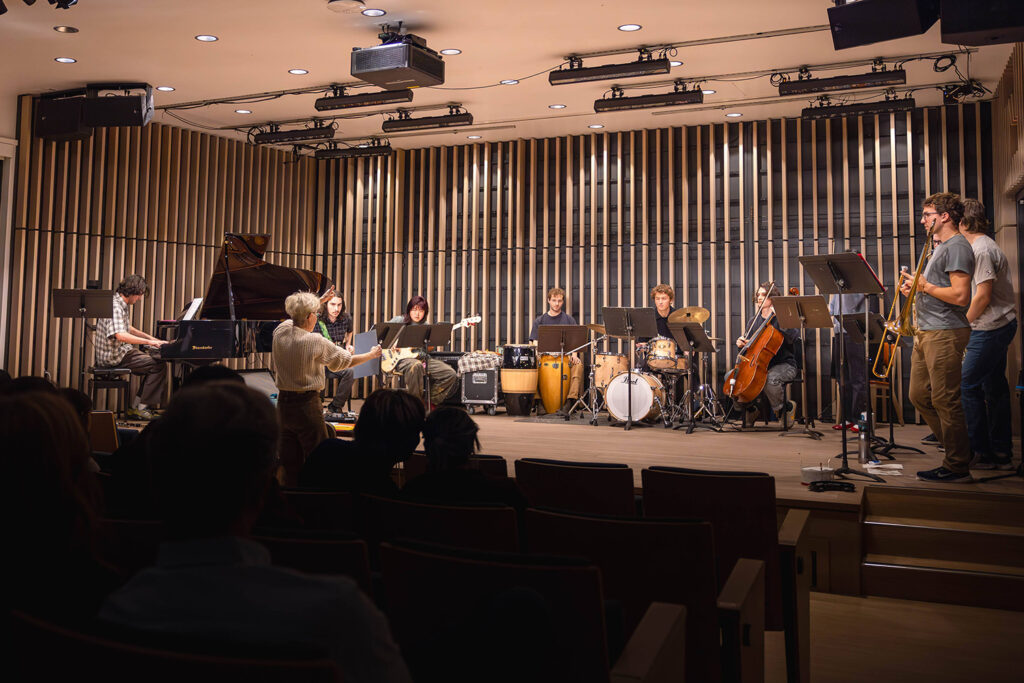
Grant Kerber/UC Berkeley Department of Music
There’s a new performance hall at UC Berkeley, and its arrival comes at an exciting and critical time for the Department of Music: From fall 2020 to fall 2024, the number of declared undergraduates majoring in music at Berkeley grew 236%.
“Music is, in fact, the fastest growing major on campus, by a large margin,” said Mark Shaw, music department manager.
According to Berkeley’s Office of Equity and Inclusion, the number of declared undergraduate music majors jumped from 55 in fall 2020 to 195 in fall 2024.
Helping to accommodate and showcase the growing number of talented student musicians is the 100-seat Helen and Thomas Wu Performance Hall in Morrison Hall, home of the music department. It was unveiled in September and had a soft launch this semester. A formal opening will be announced and held this spring.
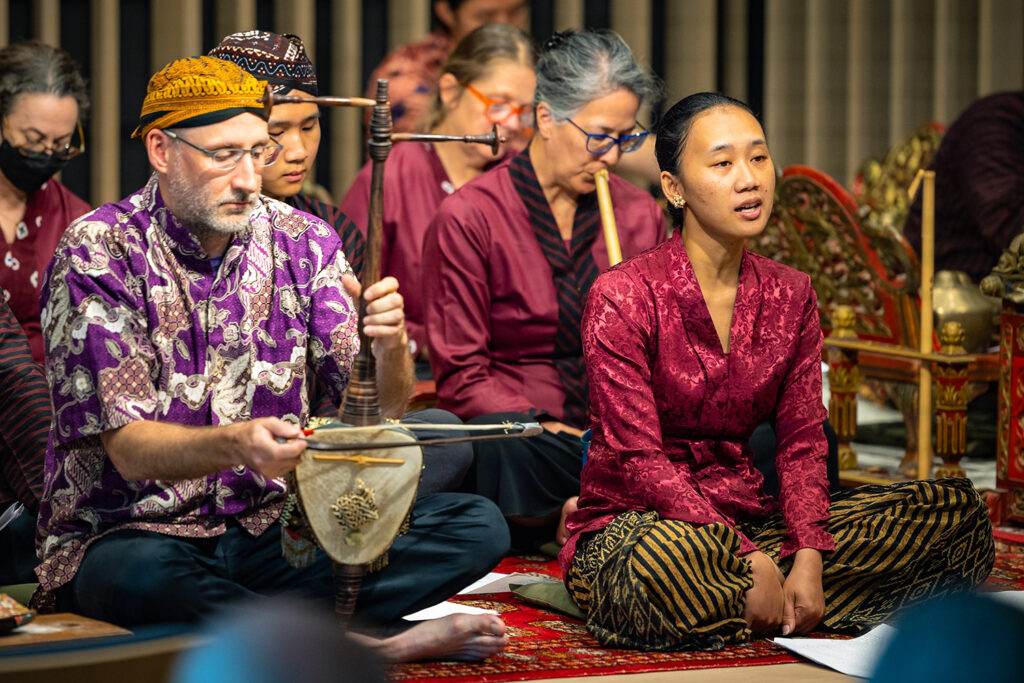
Grant Kerber/UC Berkeley Department of Music
Until Wu Performance Hall opened, Hertz Concert Hall, with 678 seats, was the only place the department had available for concerts and recitals. Hertz Hall is a formal venue that’s the right size for orchestras, choirs and other large performance groups, but too vast for soloists, small groups of vocalists, chamber and jazz ensembles, and the Indonesian (Javanese and Balinese) gamelan.
“We needed a space more intimate than a large concert hall,” said Professor Myra Melford, a jazz pianist and composer who teaches contemporary jazz, composition and improvisation-based music at Berkeley. “Wu Performance Hall previously was a lecture hall, with acoustics and a stage that was primarily for teaching. We could have concerts there, but it felt inadequate. When we had 12 people on the stage, it was very cramped.
“But the size of the stage has been enlarged so it comes out into the room a couple of feet. Now, we have adequate space for a 12-to-15-piece ensemble, and someone conducting, if necessary. It also sounds great for a trio or a quartet, or a soloist.”

Grant Kerber/UC Berkeley Department of Music
The hall also will be the principal performance venue for Berkeley’s Center for New Music and Audio Technologies, which focuses on the creative interaction between music and technology.
Wu Performance Hall is named for Berkeley alumna Laurene Wu McClain’s parents. Wu McClain launched the renovation after attending events in Hertz Hall that would have benefitted from a mid-sized recital and concert venue.
Violinist Amber Cheng, a third-year student majoring in both architecture and music, recently performed in Wu Performance Hall with Melford’s Berkeley Nu Jazz Collective and raved about the updated facility.
“The space elevates the performance, making it more immersive for both musicians and the audience,” said Cheng. “The acoustics and overall atmosphere made the performance feel more polished and complete, … It was a fantastic experience.”
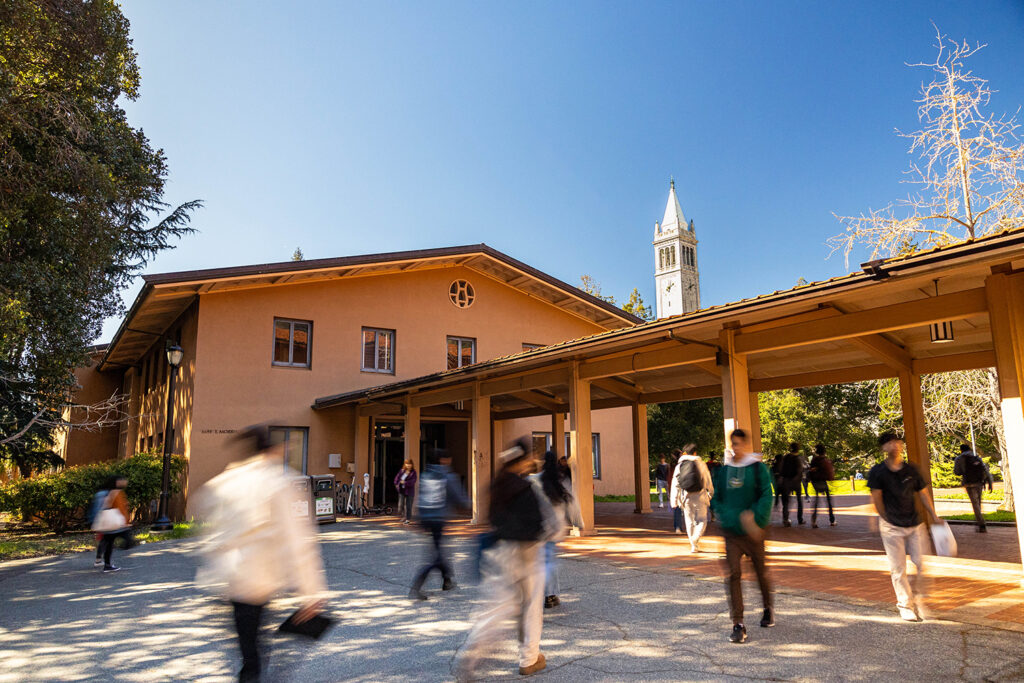
Grant Kerber/UC Berkeley Department of Music
Fastest growing major
The music department revised its curriculum several years ago to make the major more accessible to students with diverse musical talents, experiences and interests, including in popular music and digital audio technology.
“There’s been this sort of standard U.S. national definition of what a music major was at a public university, and for several decades, that’s been in need of revision,” said Edmund Campion, professor of music composition and co-director of the Center for New Music and Audio Technologies.
“We took that on,” he added, “and it worked. We are happy with the results.” Fewer requirements and more elective options are making the difference.
Melford added that she’s seeing a tripling of the number of students who apply for private lessons in jazz, and a doubling of the lessons that are given.

Grant Kerber/UC Berkeley Department of Music
For the last 50 years, the music department has intentionally and steadily been growing its programs in scope and quality, said the department’s chair, David Milnes. They include the orchestral, choral, baroque and piano programs; the African Music Ensemble, gamelan group, University Gospel Chorus, Chinese Music Ensemble and Latin jazz ensemble; and the digital and experimental music initiatives.
Because of these programs and their associated fields of study, said Milnes, “we’ve been able to attract fantastic students with an amazing variety of musical interests and backgrounds.” He said he expects further growth in the number of music majors on campus and for Wu Performance Hall to become a major new center for arts activity.
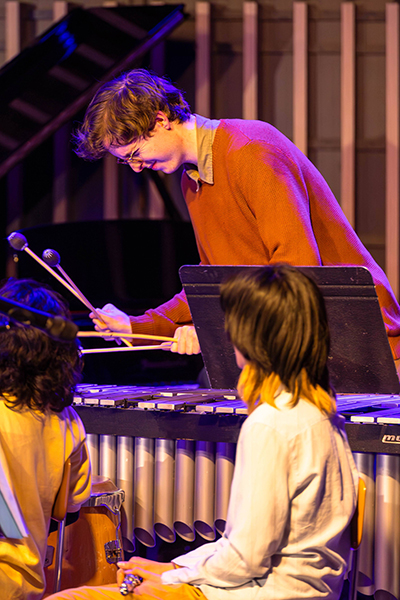
Grant Kerber/UC Berkeley Department of Music
In introductory courses for students entering Berkeley’s music program, faculty members who are specialists in areas or sub-areas of music, such as ethnomusicology, musicology, composition and performance, offer a view of all that’s possible for music majors.
Campion teaches a Music 90 (Making Music) course each fall, “and it brings together different kinds of music-making being done today and introduces the common threads,” he said. “Students get to see what the major can do, and there is a great increase in their choices for courses.”
Cheng grew up playing classical music, but said she’s also drawn to “the diverse opportunities the music program offers beyond that. The ability to explore jazz, improvisation and music technology, while still having the option to focus on classical music, appeals to students with varied musical passions and curious minds.”
The new hall’s bells and whistles
At times, the design phase of Wu Performance Hall involved the entire music department faculty. Instructors stated their students’ needs and their own, and all needed to be addressed in order to transform what used to be the Elkus Room, a lecture hall dating to 1959.
“We heard everybody’s asks, everybody’s needs, the pain points in the room, and tried to solve as many as we could,” said Brendan West, the music department’s technical director. “We didn’t do everything on the list, since budgets are real, but we optimized the outcome.”
Today, the updated hall is versatile and can be a quality concert venue or the ultimate lecture hall or a cutting-edge media space for works of art that involve sound and visuals.
“It allows us to engage with more contemporary music styles, from funk, soul and R&B to modern a cappella and jazz,” said West. “It’s also a fantastic space for performance research and experimental music.”
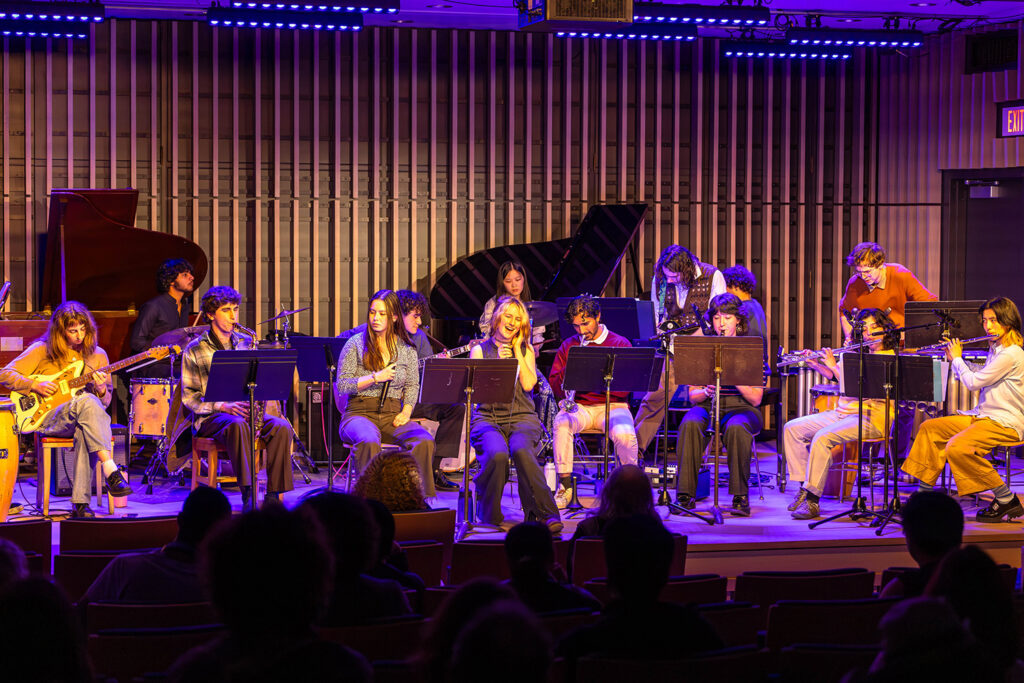
Grant Kerber/UC Berkeley Department of Music
The hall is equipped with LED lighting, automated lights that can move and create complex visual effects on stage, a sound system that offers a realistic, 3D listening experience and a projection system that allows for immersive lectures and events.
The calendar for the new venue is booking quickly. “It’s wild,” said West. “At 8 or 9 in the morning, and for most of the day, it’s a classroom. Then, in the late afternoon, a crew moves pianos around, and the lectern and lights, and it becomes a rehearsal space for our ensembles or a venue for scholarly colloquia.”
In the near future, the entire community will be able to experience Wu Performance Hall. Plans are for it to host free, weekly Friday concerts, complementing the free noon concerts that have been held at Hertz Hall since 1953.